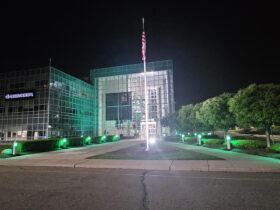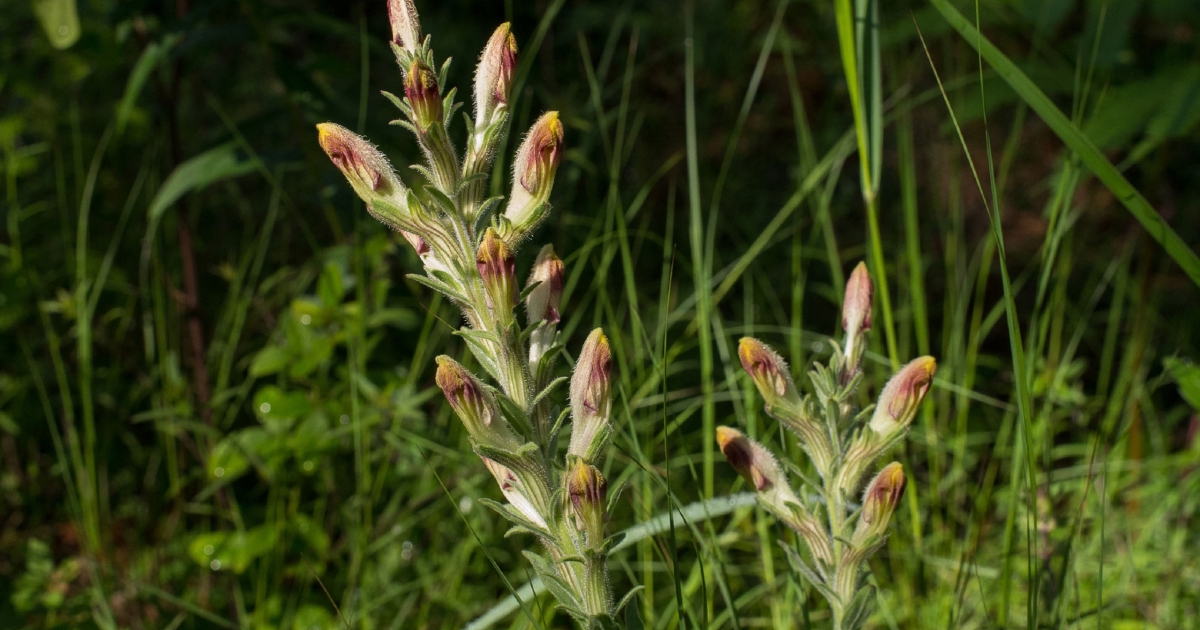PSE&G is helping restore the endangered American chaffseed by turning its own rights-of-ways into thriving natural habitats.
The gas and electric utility has transmission line rights-of-way that make an ideal habitat for the plant to flourish. The American chaffseed thrives in open, sunlit areas, PSE&G said in a statement.
“These utility corridors, maintained through selective vegetation management, mimic the natural disturbances that historically allowed chaffseed populations to thrive,” PSE&G said.
The American chaffseed (Schwalbea americana)
A flowering perennial herb in the snapdragon family, the American chaffseed (Schwalbea americana) is one of the rarest wildflowers in the Garden State and across the entire northeast. Once abundant in many states, it’s been listed as a federally endangered species since 1992.
Presently, the American chaffseed can be found in New Jersey at Brendan Byrne State Forest in the Pine Barrens, as well as in Georgia, Florida, North Carolina, South Carolina, Alabama, and Louisiana, according to to the U.S. Fish & Wildlife Service (FWS).
It’s is a hemiparasitic plant, meaning it can both photosynthesize and obtain nutrients from other plants. It’s also partially parasitic; young plants attach to the roots of a host plant to get nutrients and water.
It thrives in open, sandy and nutrient-poor soils, often in fire-maintained ecosystems where natural wildfires play a crucial role in maintaining its health and biodiversity.
Much of the American chaffseed’s historic habitat has been lost due to development, fire suppression and changes in land use. Without periodic disturbances like fire or mowing, competing vegetation overtakes the chaffseed, preventing it from getting the sunlight and nutrients it needs to grow.
The species is fire dependant in ways that “are not yet understood,” according to the FWS website.
The Perfect Habitat: Transmission line rights-of-way
To set the project in motion, PSE&G collaborated with Raritan Valley Community College and partnered with Dr. Jay Kelly, professor of biology and environmental science for Raritan Valley Community College.
Dr. Kelly planted American chaffseed beneath PSE&G’s transmission lines and then conducted targeted vegetation management at the planting locations.
The specific goal was to create perfect conditions for the plant to establish and spread, without inferring with PSE&G’s ability to maintain a reliable transmission system, PSE&G said in a press release.
PSEG’s Biodiversity Efforts
PSE&G is actively involved in numerous habitat restoration projects across New Jersey, including including pollinator-friendly plantings, wetland restoration and the protection of endangered species.
“Our work with the American chaffseed is just one of many of our ongoing environmental stewardship efforts. Our Rights-of-Way as Habitat initiative aims to utility corridors into safe havens for native plants and wildlife, helping to maintain biodiversity while ensuring reliable energy service.”
Collaboration For The Win
Through collaboration efforts with our partners, the American chaffseed has a renewed chance to regain its foothold in New Jersey, PSE&G said. By using transmission line rights-of-way as a refuge for this rare plant, conservationists hope to establish stable populations that will persist for generations to come.
“This effort underscores the importance of collaboration and innovative conservation strategies that work in harmony with modern infrastructure. Thanks to our biodiversity efforts, New Jersey is taking a significant step toward preserving its natural heritage – one plant at a time,” PSEG said.
PSE&G is New Jersey’s largest provider of electric and natural gas service. To learn more about the American chaffseed, see the FWS website.












